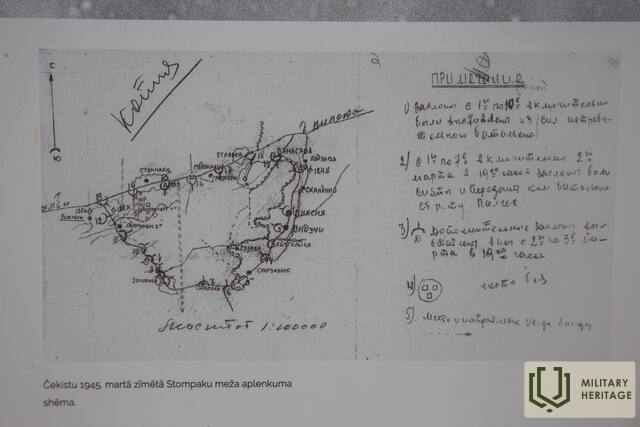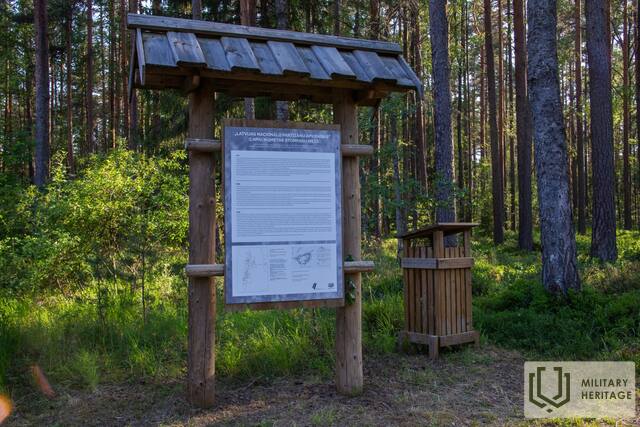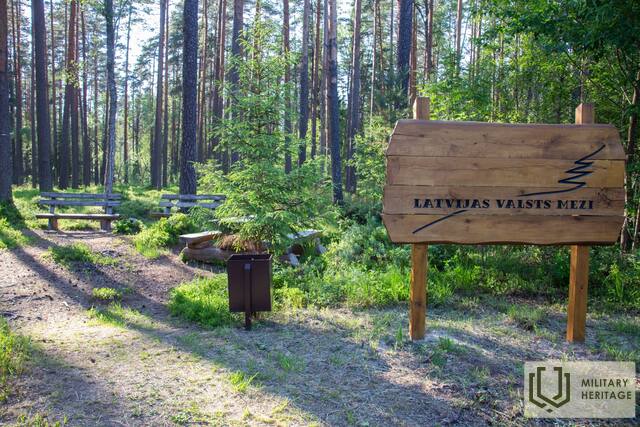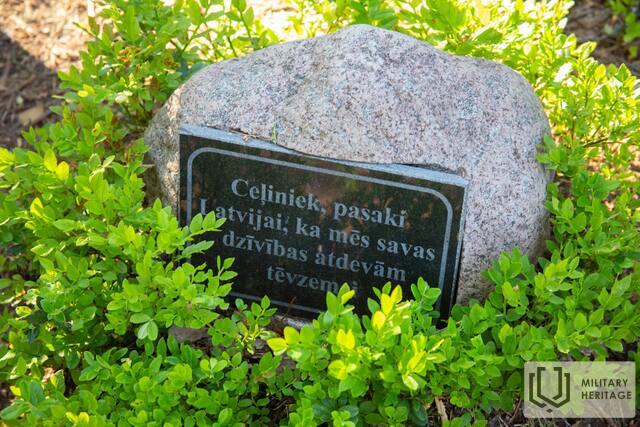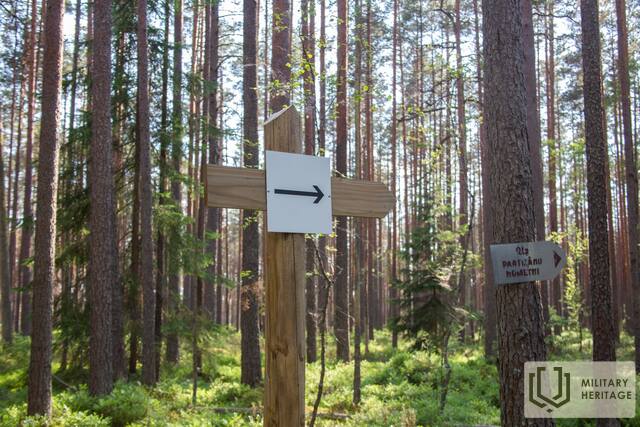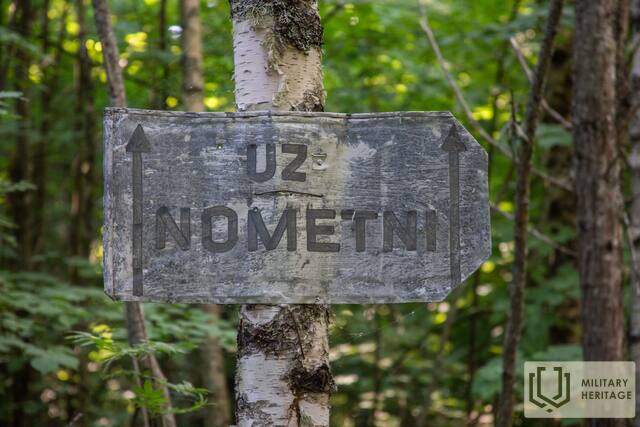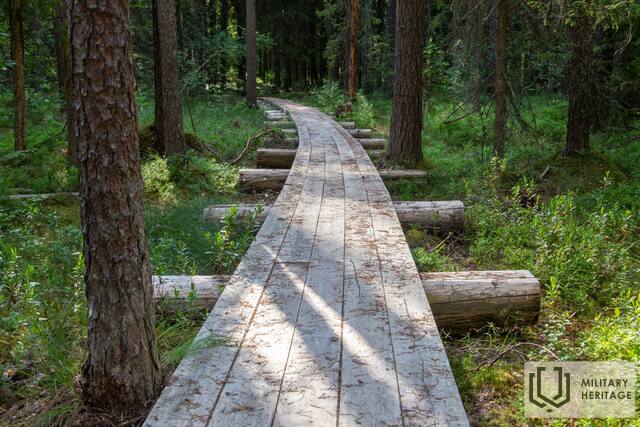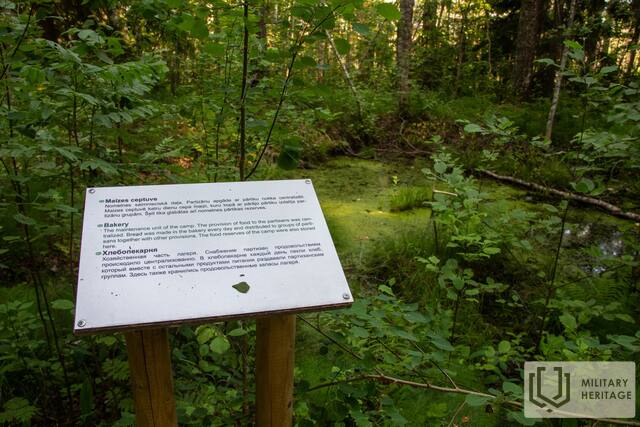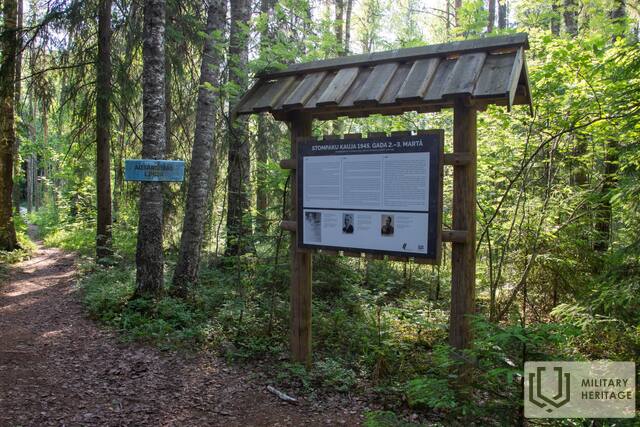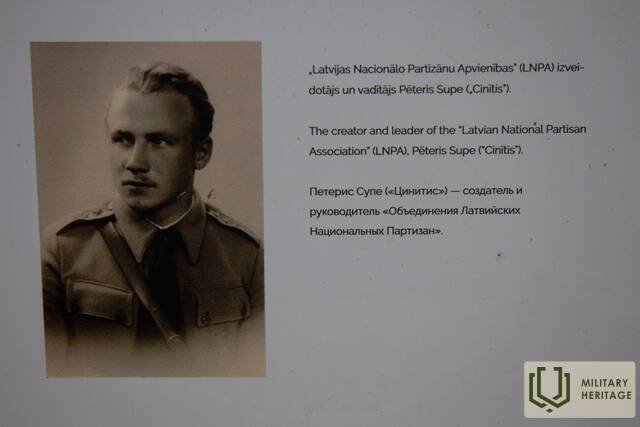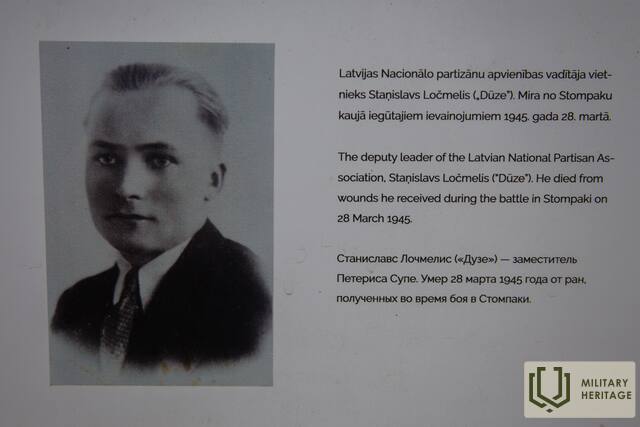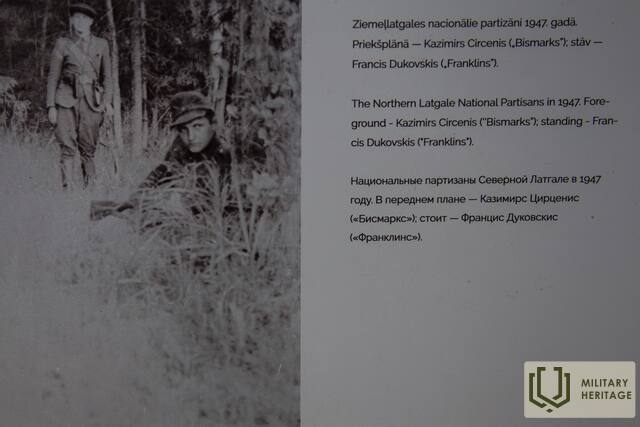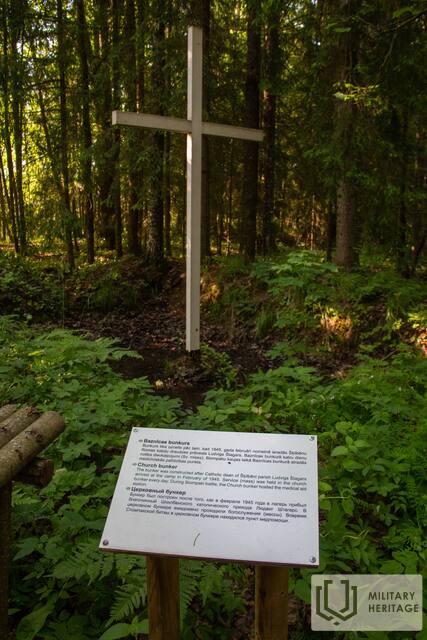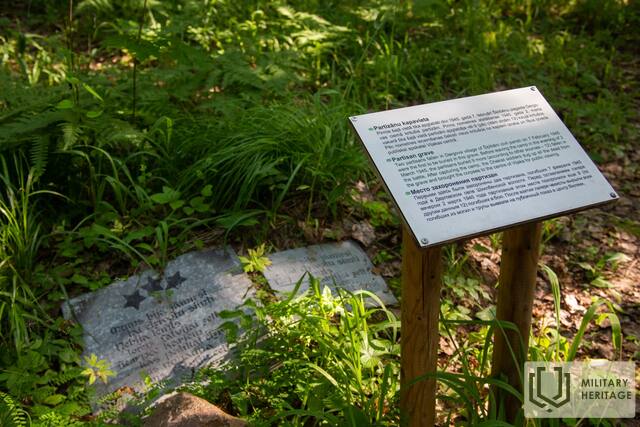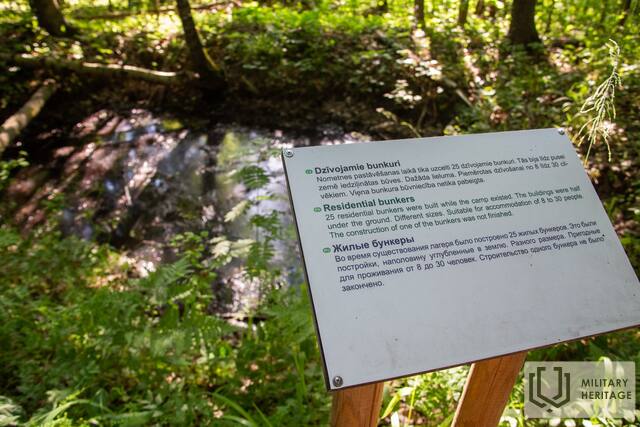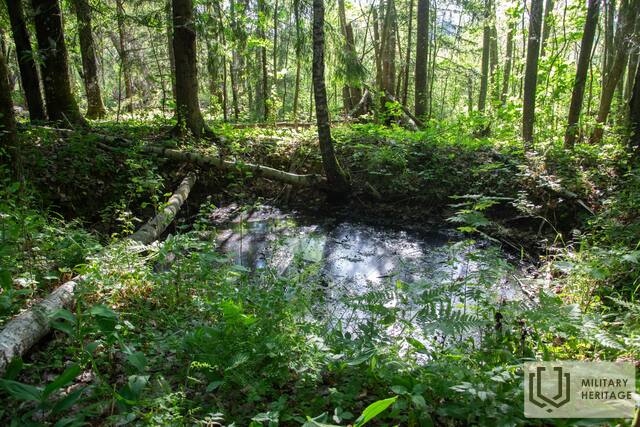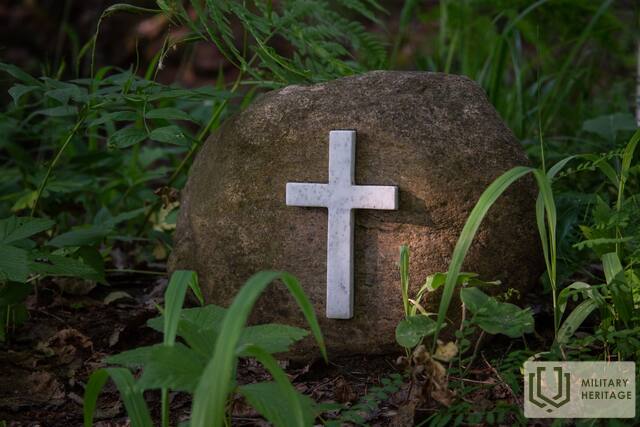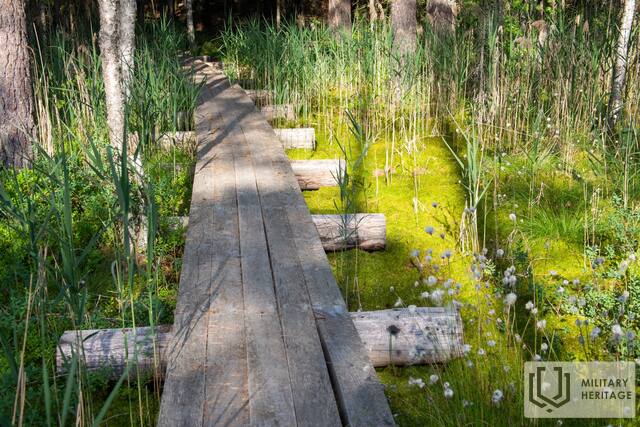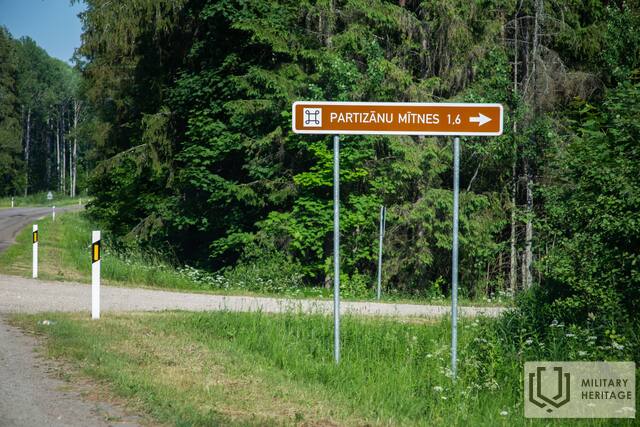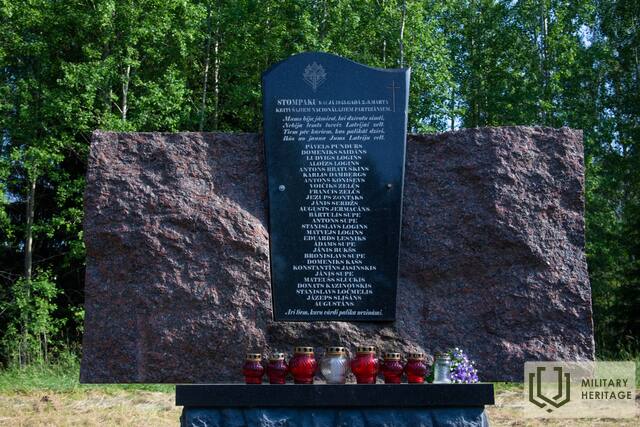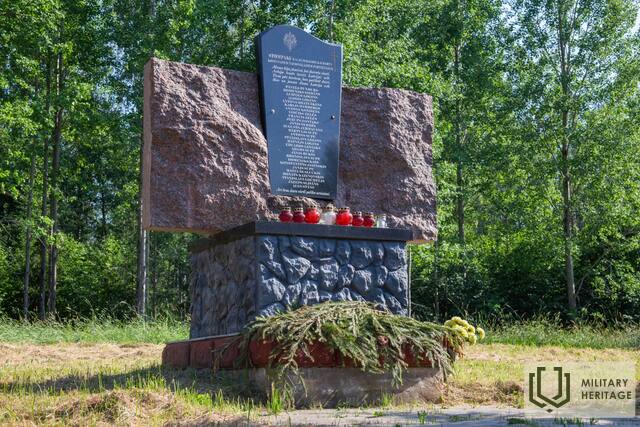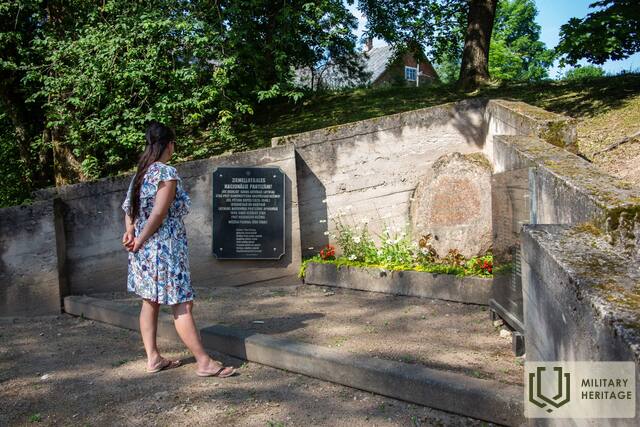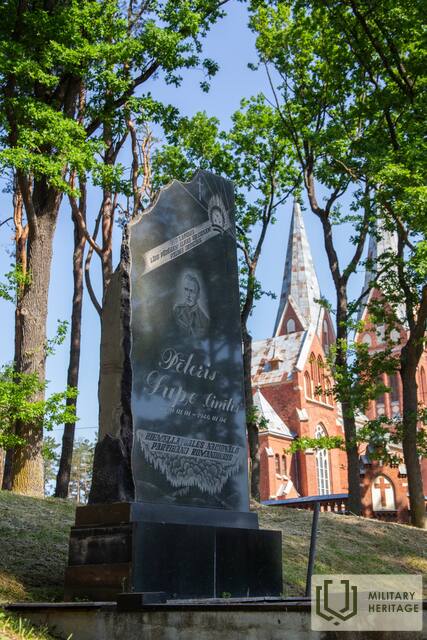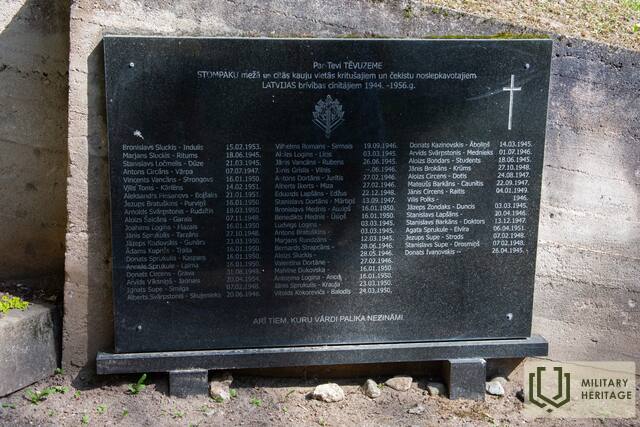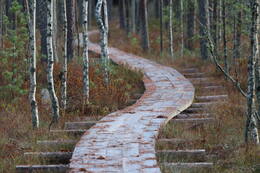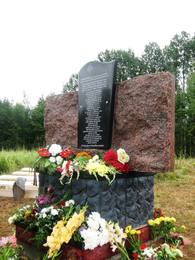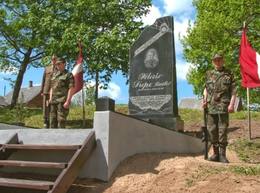Battle of Stompaku
III National Partizans, II World War II
On March 2-3, 1945, the Battle of Stompaku took place in Viļaka Parish, Abrene District (now Susāji Parish, Viļaka District) - the largest battle of the Latvian national partisans against the armed formations of the Soviet occupation regime at the end of World War II.
An armed national resistance movement in Abrene County began to form in the summer of 1944, when the territory was re-occupied by the Soviet Union. In order to avoid arrests and forced mobilization in the Red Army, many residents became illegally living in the forests individually or in small groups. On the night of October 2, 1944, the Germans landed a group of 11 divers under the codename "Lapland" in the Abrene district. It was headed by the former chief agronomist of the county Pēteris Supe ("Cinītis") and his deputy, Stanislavs Ločmelis ("Ace"), a student of the Faculty of Economics of the University of Latvia. On December 10, 1944, they founded the Latvian National Partisan Association (LNPA).
At the beginning of January 1945, the partisans of the LNPA, on the order of P. Supe, began to gather in the Stompaku bogs between Balvi and Vilaka, where a camp was established on several bog islands, which is considered to be the largest partisan camp in the entire Baltic region. Its official name for the partisans was "Island Shelters".
The camp, which housed about 350 partisans, was attacked by the NKVD (USSR People's Commissariat of Internal Affairs) troops from the 143rd Rifle Regiment of 483 men. The battle lasted from March 2 at 7.30 to 19.30, when the battle noise subsided by the morning of March 3rd. The positions of both sides were only 70-80 meters away, and longer or shorter shots continued from time to time. Using heavy snow and night cover, most partisans managed to escape the siege. 28 national partisans were killed or later wounded in the battle, but the enemy lost 46 people.
A monument with the names of the fallen partisans has been erected in Vilaka near the Catholic Church on the side of Parka Street.
A monument to the 28 national partisans killed in the Battle of Stompaku was unveiled on the side of the Balvi - Vilaka highway on August 11, 2011.
A marked trail leads to the National Partisan settlements in the nature reserve “Stompaku Purvi”, which was opened on March 2, 2019.
More information sources
Zigmars Turčinskis. Battle of Stompaku on March 2, 1945. SARGS.LV (12.04.2016): https://www.sargs.lv/lv/otrais-pasaules-kars/2016-04-12/stompaku-kauja-1945-gada-2-marta
Uldis Neiburgs. We had to die to live a hundred. Battle of Stompaku - 70. LA.LV (14.03.2015): https://www.la.lv/mums-bija-jamirst-lai-dzivotu-simtistompaku-kaujai-70
In the dreams of a distant bog edge come ...: [Book about national partisans in Latgale] / iev. aut. J.Kīdzējs. -. Rezekne: Latgale Culture Center Publishing House, 1997.
Related timeline
Related objects
Trail and partisan memorial in Stompaki bog
During World War II, one of the largest national partisan camps in the Baltic states was situated in Stompaki Swamp. Today, the territory is included in the nature reserve “Stompaki swamp”. The settlement sites located on the islands in the swamp can be reached via a marked footpath.
In early 1945, about 350 to 360 people, including 40 to 50 women, lived at the camp of National Partisans in Stompaki Swamp. The camp consisted of 24 residential bunkers – buildings that were half-immersed into the ground and could accommodate 3–8 people. There was a bakery, a church bunker and three above-ground rails for horses. Partisans from the camp carried out attacks against officials of the occupation regime. On 2–3 March 1945, the Battle of Stompaki took place here – the largest battle in the history of Latvian national partisans. The 350–360 partisans in the camp were attacked by the 143rd Rifle Regiment of NKVD and local fighters of the so-called ‘istrebitel’ (eliminators) battalion – 483 men in total. The battle lasted for the entire duration of the day on 2 March. On the night of 3 March, the partisans managed to break out of the camp and retreat to their previous base camps. The battle resulted in 28 casualties among partisans, while the NKVD force lost 32 fighters.
Today, the site of the Stompaki camp is home to three restored bunkers – a church, a headquarters and a residential bunker – as well as 21 sites of former bunkers. Information boards about the camp and the battle have been installed at the site. Guided tours can be booked.
Monument to members of the resistance movement in Stompakis
It is located 15 km from Balvi in the direction of Viļakas, on the right side of the road.
A memorial is visible.
The memorial to the members of the resistance movement, dedicated to the memory of the national partisans of Pēteras Supes who fell in the battles of March 2 and 3, 1945, on the side of the Balva - Viļaka highway opposite the Stompaki swamp, was opened on August 11, 2011, on the day of remembrance of Latvian freedom fighters. At the end of July, a capsule with a message for future generations was embedded in the base of the monument. A document with the names of 28 national partisans who fell in the battles of March 2 and 3, 1945 is placed in the capsule.
"In February 1945, Latvia's largest national partisan camp was established on the islands of the Stompaku swamp, which the people began to call the islands of the Stompaku swamp, 2 km from the Balvu - Viļaka highway, where 360 people lived in 22 dugouts. Among them, some legionnaires who, for the legion division retreating, they had stayed at their father's house with all their weapons. In order to destroy the partisans, on March 2, 1945, the soldiers of two battalions of Czech troops attacked the dugouts together with destroyers, which also had four mortars in their armament. The battles took place all day, the partisans resisted stubbornly, and the attackers suffered suffered great losses, so that they could not capture the camp and destroy the partisans. 28 inhabitants of the Stompaku swamp had also fallen or died after being seriously injured in the battle. The next night, the partisans broke the siege of the camp with a battle and left undefeated" - this is what a member of the national resistance movement of the award department writes about the Stompaku battle chairman of the case commission, Zigfrīds Berķis.
Monument to the commander of the North-Eastern national partisans Pēteris Sup - "Cinītis"
Honoring the memory of the national partisan commander Pēteras Supes, on May 28, 2005, a monument dedicated to him was unveiled in Vilakas. It is placed near the Viļaka Catholic Church, on the edge of the trenches dug during the war, where the Chekists buried the shot national partisans. A capsule with the names of 386 fallen national partisans, battle descriptions and materials about the partisan commander is placed under the monument dedicated to P.Supem. The words engraved in stone: "I remained faithful to you, Latvia, until my last breath".
The monument was created by Pēteris Kravalis.
Next to it is a memorial place in the Stompaki forest and other places of battle for Latvian freedom fighters who fell and were murdered by the Chekists in 1944-1956.
On June 20, 2008, a granite plaque with the names of 55 fallen partisans arranged in three columns was discovered on the right wall.
The monument was erected in the place where the communist occupation authorities once displayed the remains of the murdered partisans to intimidate the rest of the population.
Words of thanks to Pēteris Supe and a poem by Bronislava Martuževa are engraved on the adjacent plaque:
"Get up, Peter Supe,
Soul, in battle!
Today Your blood sacrifice,
Risen in the nation.
Go out to live forever
In the strength and vigor of the young,
Wraps, flutters, folds
In the rising flag!"
Vilaka Museum
Viļaka Museum operates in two buildings – the Catholic parish house, built in 1913, which is an important cultural heritage object of the town, and the other building of the museum – a former monastery of Capuchin monks, whose cellars are closely related to the national partisan movement in Stom paki and the Soviet Cheka. According to the memories of the locals, people were held and tortured in these cellars. The old museum building houses several exhibitions, with one of the exhibitions dedicated to the 1920 freedom battles in Northern Latgale, and the second – to the events of the Second World War – the Jewish Holocaust in Viļaka and information about the families who were shot. More information about each family is available based on their street address.
The exhibition is supplemented by information about the national partisan movement in Stompaki – various testimonies, photographs and objects. Visitors can learn about the military heritage sites in and around Viļaka, such as the Freedom Fighters Monu ment in Jaškova, which was demolished during the Soviet era and restored in 1990, and the stele dedicated to the recipients of the Order of Lāčplēsis. The sound of World War II aircraft is incorporated into the exhibition of the museum, as the German Luftwaffe airfield was located near Viļaka. The museum offers an opportunity to see some memories of the Second World War events in Viļaka, as well as to receive information about the German prisoner-of-war camp in Rači
Related stories
Pēteris Supe - the initiator of the founding of the Latvian National Partisan Association
From 1944 to 1946, Peter Supem managed to unite the national partisan units scattered in the forests in an organized movement that fought against the occupation of Latvia in the Abrene district for several years after the Second World War. Pēteris Supe, nicknamed "Cinītis", was one of the most outstanding organizers and leaders of the national guerrilla movement in Northern Latgale.
Forest Daughter Domicella Pundure (Lucia)
Domicella Pundure is 90. At Riga Castle on May 3, 2018, she received the Order of Viesturs from the hands of President Raimonds Vejonis for special merits in the national resistance movement and in defending the country's independence. Domicella Pundure remains the last witness to the battle of Stompaku bog.




